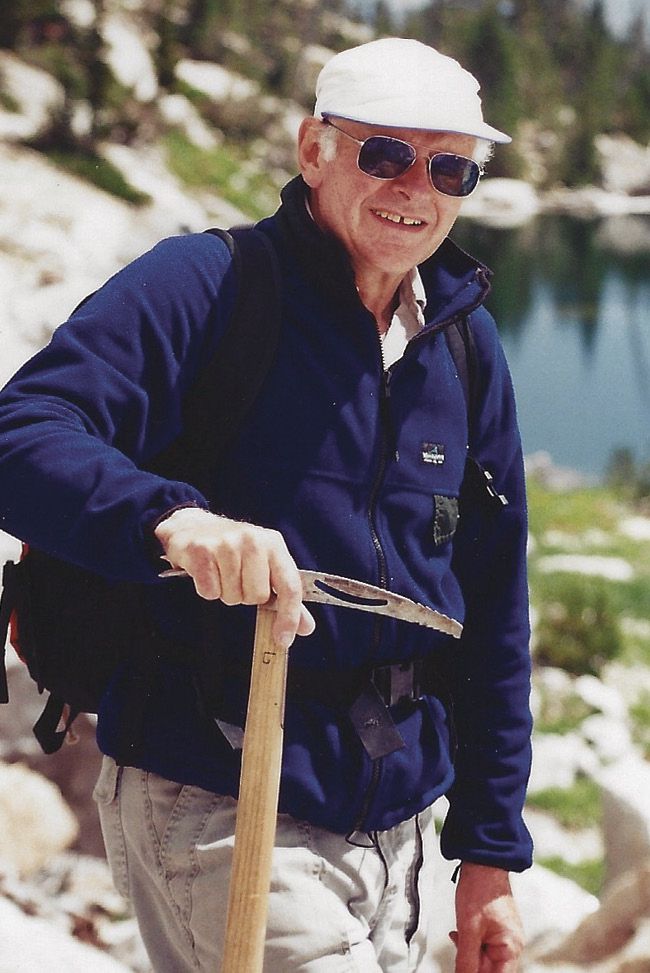Kurt Gottfried
DOI: 10.1063/PT.3.5181
Kurt Gottfried, a professor of physics at Cornell University who was also known for his work to promote nuclear arms control, secure the human rights of scientists, and prevent political interference in science, died on 25 August 2022 in Ithaca, New York.

Kurt Gottfried

Born on 17 May 1929 in Vienna, Kurt fled with his family to Belgium in 1938 after Kristallnacht, when the Nazis carried out raids against the Jewish population. The Gottfried family ultimately emigrated to Montreal in 1939.
After receiving his bachelor’s and master’s degrees in engineering physics at McGill University in 1951 and 1953, respectively, Kurt earned a PhD in theoretical physics at MIT in 1955. His thesis, “Investigations based on the Bohr–Mottelson nuclear model,” was done with Victor Weisskopf as his adviser. Kurt spent most of the next nine years at Harvard University, as a junior fellow and then an assistant professor, with a short stint at the Niels Bohr Institute, before joining the Cornell physics department in 1964. He became a professor emeritus in 1998.
Kurt is known for his early work in 1963–64 with John David Jackson in analyzing long-lived unstable particles from high-energy hadronic collisions in order to understand the strong interaction. He published his widely used textbook, Quantum Mechanics: Fundamentals, in 1966. He published a second, expanded edition, coauthored with one of us (Yan), in 2003.
Kurt also made significant contributions to the understanding of quarks. In 1967, as a test of the quark model, he developed the Gottfried sum rule, which quantifies the difference in the electron scattering probability off different nucleons according to their quark composition.
In 1975 Kurt and Cornell colleagues (including Yan) explained the recently discovered J/ψ and ψ′ particles as bound states of the predicted charm quark and antiquark pair (charmonium) and calculated the energy spectrum of those states. Experimental confirmation of their predictions was important in demonstrating the existence of quarks.
Kurt spent 1968–69 at MIT. Student activism was high, especially around the involvement of academic science departments in projects related to the Vietnam War and new weapons systems. Kurt drafted a statement urging scientists and engineers to examine society’s use of science and technology and calling for a day of education on 4 March 1969, during which university classes would devote their time to discussing those issues. Several dozen colleges across the country took part.
With Herman Feshbach and Francis Low, Kurt led a newly formed faculty group—the Union of Concerned Scientists (UCS)—which released the statement, signed by a list of prominent scientists, and organized two days of speakers at MIT. In the 1970s Kurt and Henry Kendall turned the UCS into an independent nonprofit organization (today with more than 200 staff), where scientists and other experts could apply their knowledge to important public policy issues. Kurt served on the UCS board until his death, and he was its chair from 1999 to 2009.
During the 1980s and 1990s, Kurt spoke and wrote on a range of security issues, contributing to the New York Times, the Washington Post, Scientific American, and other outlets. In 1982–83 he, Richard Garwin, and Leonard Meeker developed a draft treaty banning anti-satellite and space-based weapons, which they presented to Congress. Following President Ronald Reagan’s 1983 announcement of the Star Wars program, Kurt worked closely with prominent scientists, including Kendall, Garwin, and Hans Bethe, and with UCS staff to critique the missile defense program on technical and arms-control grounds. He coauthored the influential book The Fallacy of Star Wars (1984). With two of us (Gronlund and Wright), Garwin, and others, he wrote Countermeasures: A Technical Evaluation of the Operational Effectiveness of the Planned US National Missile Defense System (2000).
Expanding his focus to include nuclear weapons command and control, Kurt coedited Crisis Stability and Nuclear War (1988) with Bruce Blair. He also worked with Paul Bracken on post–Cold War security relations, coediting Reforging European Security: From Confrontation to Cooperation (1990).
During the 1980s Kurt traveled to the Soviet Union to meet with refuseniks and urged other scientists to actively support the dissidents. He was instrumental in securing the release of the prominent Soviet physicist Yuri Orlov in 1986 and arranged for him to join the Cornell physics faculty. Kurt also helped obtain the release in 1978 of the Argentine physicist Elena Sevilla, imprisoned for her husband’s political activities, and was able to get her to Cornell to finish her doctorate degree.
In 2004, in response to the manipulation of the scientific advisory process by the George W. Bush administration, Kurt worked with the UCS to draft the statement “Restoring Scientific Integrity in Policy Making” and recruit 62 preeminent scientists to sign. Ultimately endorsed by 12 000 scientists, it drew public attention to the issue and led to strengthened scientific-integrity guidelines and policies throughout the federal government.
For his lifetime of work, the American Association for the Advancement of Science awarded Kurt its 2016 Scientific Freedom and Responsibility Award.
Kurt was humble, was respectful of others, and had a droll sense of humor. His dedication to making positive change in the world was an inspiration to many scientists. He thought deeply about issues, often working in partnership with his wife, Sorel Gottfried. UCS board members aptly called him the organization’s “moral compass.”
More about the Authors
Lisbeth Gronlund. Massachusetts Institute of Technology, Cambridge.
David Wright. Massachusetts Institute of Technology, Cambridge.
Tung-Mow Yan. Cornell University, Ithaca, New York.
